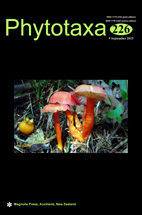Abstract
During a survey of the freshwater littoral diatom flora from lakes and ponds in the region of Petuniabukta on Spitsbergen (Svalbard Archipelago, High Arctic region), a new Achnanthidium species, A. petuniabuktianum sp. nov., has been recorded. Achnanthidium petuniabuktianum is a new representative of the A. pyrenaicum group as evidenced by its curved distal raphe fissures. The present paper describes in detail the morphology of A. petuniabuktianum based on light and scanning electron microscopy. The new taxon is characterized in having linear valves with parallel margins and broadly rounded, never protracted apices and a characteristic—in light microscopy hardly discernible—striation pattern consisting of very short striae composed of one or two small, always slit-like areolae. Based on current results, Achnanthidium petuniabuktianum is a benthic taxon occurring in epilithic and epiphytic habitats in the littoral zones of freshwater lakes and ponds.

